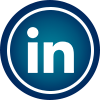Phantom Limb Pain Syndrome Treatment Specialist Q&A
Phantom limb pain syndrome develops after an amputation. You may experience severe discomfort in the missing limb, including tingling, throbbing, sharpness, and pins and needles in the limb that are no longer there. Contact us at the Global Neuro and Spine Institute if you are an amputee experiencing phantom limb pain. Our physicians provide patients with comfort and therapy for post-amputation limb pain. Contact us today to learn more or schedule an appointment online. We have convenient locations to serve you in Orlando FL, Jensen Beach FL, Malabar Palm Bay FL, Atlantis FL, Fort Pierce FL, Winter Park FL and Plantation, FL.


Table of Contents:
What happens during phantom limb pain syndrome?
What are the causes and symptoms of phantom limb pain?
What is the difference between stump pain and phantom pain?
How do you get rid of phantom pain?
The majority of patients who have had a limb removed, either through a surgical amputation or lost in an accident, will experience some degree of phantom limb pain, especially in the first few months following the loss of the limb. This pain is very real and should be brought to the attention of a health care provider in order for the patient to find pain relief as there are a number of effective treatment options available.
Phantom limb pain syndrome is a very common condition for those who have lost a limb, whether it was surgically removed or amputated during an accident, where the peripheral nerves send signals to the brain indicating pain in the limb that is no longer there. It is believed to just be a mix-up in the nervous system as your body is unable to register that a limb that has always been there is no longer present. The nerves that connected the amputated limb to the brain still exist above where the limb was removed, so experts believe that the brain is simply misinterpreting the information it is receiving from the spinal cord, making it believe that pain is being experienced in the limb that has been removed.
The only concrete known cause of phantom limb pain is having a limb amputated, with around 80% of patients who have either lost a limb in an accident or had to have it surgically removed experiencing some degree of phantom limb pain at some point. The occurrence of phantom limb pain is thought to be a mix-up of signals between the spinal cord and the brain, with the brain interpreting signals to being pain that is experienced in a limb that is no longer attached to the body. It is very difficult to determine concretely which patients who have had a limb amputated will experience phantom limb pain, but there are some factors that have shown to increase the risk of developing phantom limb pain, including those with increased levels of stress, angina, shingles, those who smoke, or if there are frequent changes in barometric pressure or temperature. Many patients may also experience phantom limb pain if they are suffering from constipation or when experiencing intimate physical touch.
While they are often commonly associated or even conflated, phantom limb pain and residual limb pain are very different. While phantom limb pain is nerve signals being mixed-up on their way to the brain, making it believe that a limb that was previously amputated and is no longer attached to the body is experiencing pain, residual limb pain often has a medical reason that is causing the pain that is being properly indicated to the brain and can be medically treated. When an amputation occurs, there are nerves left behind that may become damaged or entrapped, which causes pressure to be placed on the nerves, resulting in pain. The remaining stump that is left behind after an amputation can incur a number of problems that lead to pain, including bruising, infections in the bone, bone spurs, inflammation in the nerves, limited or poor blood flow, pressure injuries, infections to the skin or surgical wound, and pain caused by a prosthetic that does not fit properly. Both phantom limb pain and residual limb pain are real experiences of pain and are common in those who have recently undergone an amputation, but their causes are very different.
Even though phantom limb pain is the sensation of pain in a limb that is no longer attached to the body, it is still very real pain that can be treated. Effective treatments for pain relief of phantom limb pain include prescription pain relievers, beta blockers, anti-depressants, injections of anti-inflammatory steroids, and muscle relaxers. Many physicians have also found treatments that use electrical impulses to communicate with the nerves, brain, and spinal cord result in pain relief; common treatments include neurostimulation, transcutaneous electrical nerve stimulation, and spinal cord stimulation. Mirror therapy has also proven to be quite effective in tricking the brain into thinking it has two healthy limbs, resulting in significant pain relief for many patients.
The specialists at Global Neuro & Spine Institute can assist you in managing the symptoms of this pain condition so that you may work on your recovery and regain strength. For more information, contact us or book an appointment online. We serve patients from all across the Sunshine State, in Orlando FL, Conway FL, Edgewood FL, Jensen Beach FL, Ocean Breeze FL, Rio FL, Malabar Palm Bay FL, Melbourne FL, Atlantis FL, Palm Springs FL, Boynton Beach FL, Fort Pierce FL, White City FL, St Lucie FL, Plantation FL, Pine Island Ridge FL, Lauderhill FL, Winter Park FL, Bertha FL, Alafaya FL and surrounding areas.

CONDITIONS WE TREATED:
- Facet Joint Disorders
- Back Surgery Complications
- Migraines
- Herniated Discs
- Back Pain
- Lower Back Pain
- Neck Pain
- Sciatica Pain
- Abdominal Pain
- Compression Fractures
- Joint Pain Treatments
- Shoulder Pain Treatments
- Elbow Pain Treatments
- Hip Pain Treatments
- Knee Pain Treatments
- Diabetic Peripheral Neuropathy
- Complex Regional Pain Syndrome
- Pelvic Pain
- Occipital Neuralgia
- Chest Wall Pain
- Chronic Facial Pain
- Phantom Limb Pain
- Interstitial Cystitis – Pelvic Pain
- Herpetic Neuralgia
- Cervical Radiculopathy
- Degenerative Disc Disease
ADDITIONAL SERVICES
- Kyphoplasty
- Epidural Steroid Injection
- Posterior Facet Blocks – Rhizotomy
- Sacroiliac Joint Injection
- Percutaneous Discectomy
- Stellate Ganglion Blocks
- Intercostal Nerve Blocks
- Intra-Articular Peripheral Joint Injection
- Lumbar Epidural Steroid Injections
- Coccygeal Nerve Block
- Occipital Nerve Blocks / Rhizotomy
- Selective Nerve Root Blocks
- Discography
- Hardware Blocks
- Cluneal Nerve Block
- Spinal Cord Stimulators
- Sympathetic Nerve Blocks
- Headaches Treatments

CONDITIONS WE TREATED:
- Facet Joint Disorders
- Back Surgery Complications
- Migraines
- Herniated Discs
- Back Pain
- Lower Back Pain
- Neck Pain
- Sciatica Pain
- Abdominal Pain
- Compression Fractures
- Joint Pain Treatments
- Shoulder Pain Treatments
- Elbow Pain Treatments
- Hip Pain Treatments
- Knee Pain Treatments
- Diabetic Peripheral Neuropathy
- Complex Regional Pain Syndrome
- Pelvic Pain
- Occipital Neuralgia
- Chest Wall Pain
- Chronic Facial Pain
- Phantom Limb Pain
- Interstitial Cystitis – Pelvic Pain
- Herpetic Neuralgia
- Cervical Radiculopathy
- Degenerative Disc Disease
ADDITIONAL SERVICES
- Kyphoplasty
- Epidural Steroid Injection
- Posterior Facet Blocks – Rhizotomy
- Sacroiliac Joint Injection
- Percutaneous Discectomy
- Stellate Ganglion Blocks
- Intercostal Nerve Blocks
- Intra-Articular Peripheral Joint Injection
- Lumbar Epidural Steroid Injections
- Coccygeal Nerve Block
- Occipital Nerve Blocks / Rhizotomy
- Selective Nerve Root Blocks
- Discography
- Hardware Blocks
- Cluneal Nerve Block
- Spinal Cord Stimulators
- Sympathetic Nerve Blocks
- Headaches Treatments






